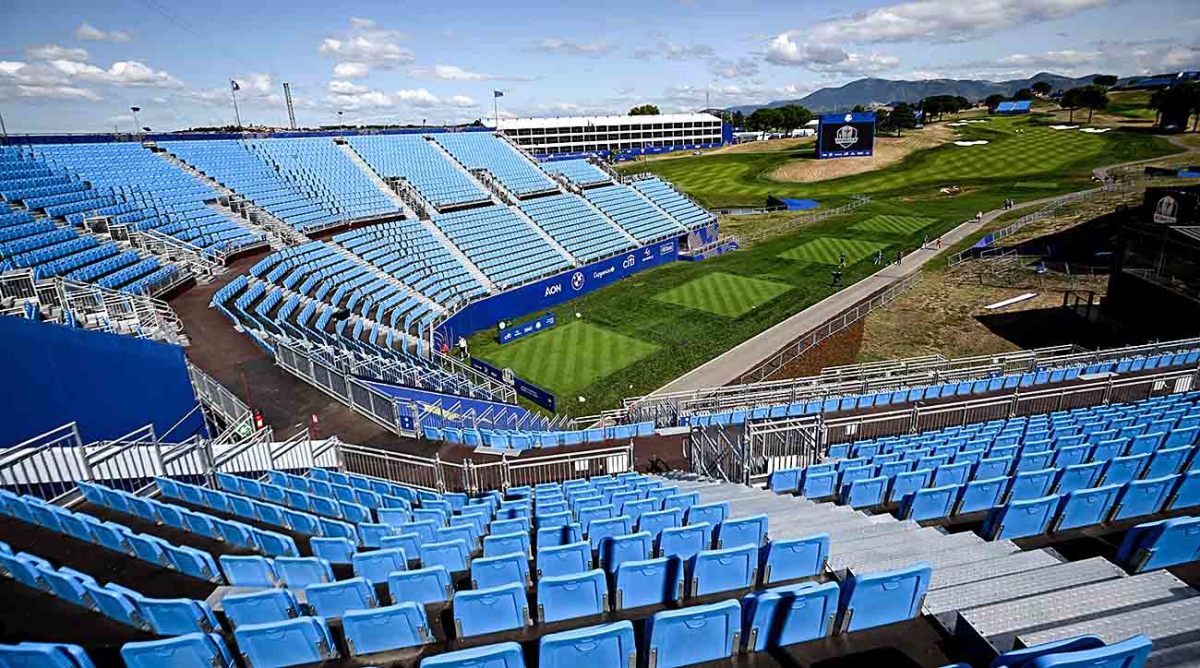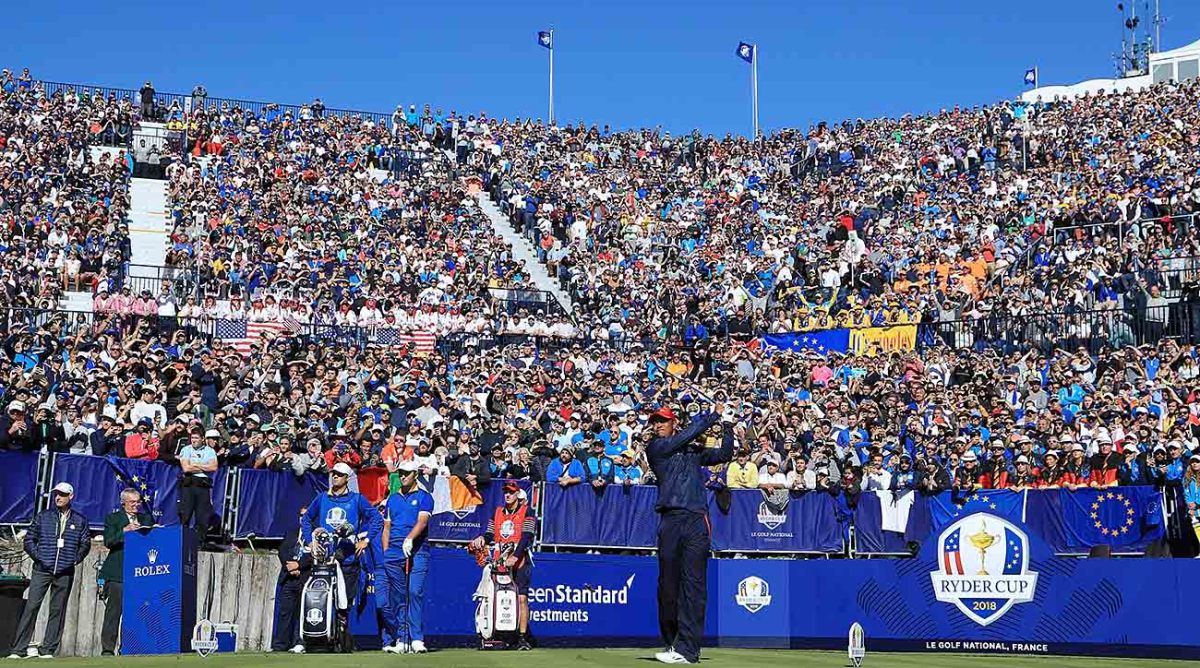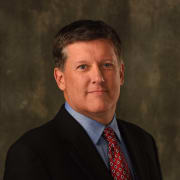‘It Feels Gladiator-Like’: The Ryder Cup’s First Tee Anticipation and Anxiety Is Unmatched in Golf
ROME — Golf typically does soft openings. A leisurely stroll onto the first tee. Warm applause from those in the gallery. Handshakes among fellow competitors and caddies. A tip of the cap. And off they go.
Not at the Ryder Cup.
The first tee at the biennial competition has become one of the most daunting places in the game, more nerve racking than almost any other tournament, even major championships.
And it promises to be no different Friday when competitors begin play at Marco Simone Golf Club, with the early-morning start time hardly a deterrent to the hardy souls who will fill the grandstands starting at darkness.

“Nothing really prepares you for it,” said England’s Justin Rose, who is playing in his sixth Ryder Cup. “You go down and look at the first tee, you see the size of the grandstand. What intensifies it are the crowds that get to the course so early and are so excited on Friday morning.
“There’s a lot of talk going into it, and Friday morning comes and it’s the moment everyone’s been waiting for. Generally the Europeans are singing songs and you hear the USA chants. And it does feel quite gladiator-like. The first tee looms. That’s where everyone is congregating. The intensity is like nothing else.”
While Rome’s Colosseum is a fitting comparison—and it is noted on the grandstands at Marco Simone—a large, intimidating structure that frames the first tee is nothing new.
There have been various iterations of it for years, some smaller or larger depending on logistics.
According to Ryder Cup Europe, this year’s first-tee buildout is expected to hold approximately 5,000 people. That’s fewer than the 7,000 that filled the grandstands at Le Golf National in Paris in 2018.
What all golfers dream off 🔊#TeamEurope | #RyderCup pic.twitter.com/dmkild2cvx
— DP World Tour (@DPWorldTour) September 25, 2023
American venues have generally been a bit smaller but still boisterous. There were approximately 4,000 at the first tee at Whistling Straits two years ago, but that doesn’t count the thousands more who line the fairway and green.
“I try to explain to people that it’s nerves I’ve never had in golf,” said American Justin Thomas of his first experience at the 2018 Ryder Cup. “I mean, winning two majors, 15 times, like it doesn’t hold a candle to how nervous I’ve been in Ryder Cups and how nervous I was on the first tee in Paris. It’s a totally different feeling. And it’s butterflies; it’s exciting butterflies.”
Thomas, who won his first match in Paris with Jordan Spieth 1 up over Paul Casey and Tyrrell Hatton, said he was so uncomfortable on the first tee that he was glad he was not hitting a driver. He used a 5-wood, which he said he could hit off the turf.
“I’ve said if I had to put it on a tee, I couldn’t have,” Thomas said. “I was too nervous to where I couldn’t get the ball on the tee.
“That’s when I was very, very glad to have Jordan [Spieth] as my partner and someone to calm me down and make as many birdies as he did because that’s why you want to be there. The pressure, it’s a privilege, you want to be able to feel that, and if you didn’t feel that, I mean, then there would be no reason for me or any of us to be playing.”

To be part of the show among spectators at the first tee requires some dedication. The Ryder Cup sells hospitality and ticket packages that includes a seat in the first tee grandstands—tickets that sold out months ago.
But it does leave room for some unreserved seating that can be occupied on a first-come, first-serve basis. That suggests being at the course and waiting outside the gates well before they open to be poised to grab those spots.
For those doing that mad scramble, it will at least be comforting to know that the advance ticket buyers won’t be sauntering in behind you. Ryder Cup officials said anyone sitting at the first tee grandstand—having a prepurchased ticket or not—must be in their seats 45 minutes ahead of the first scheduled tee time. If they are not, the seats can be given to those who showed up without a ticket.
“The atmosphere is pretty special,” said England’s Hatton, whose first Ryder Cup was in 2018. “It’s so noisy. And then when you’re stepping into the ball, you could literally hear a pin drop. I was genuinely smiling over the ball. It was amazing. I hit a really nice tee shot, which was great. Felt amazing to see a good shot and walk off that tee.”
Even before there were such huge structures at the first tee, the opening shot caused tension.
Lanny Wadkins, 73, played in the first of his eight Ryder Cups in 1977 at Royal Lytham & St. Anne's in England. This was before all of Europe competed and the U.S. generally dominated. It was still harrowing.
“The first tee shot at Lytham is a par-3,” Wadkins said. “I’m playing with Hale Irwin in alternate shot and we decided I’d tee off on the even holes. And we got to the first tee. Now I had just won the PGA [Championship] and the World Series. I’ve got as much confidence as I’ve ever had.
“We get on the first tee and Hale goes ‘You need to hit here. I don’t like the way the wind is blowing.’ First Ryder Cup. But I said fine, no problem. That was a 5-iron shot, and I was pretty nervous, although maybe not as much as if I had not won the PGA and the World Series because I was pretty much floating on air at that time.”
Then, Wadkins and the others simply walked onto the tee as they would at any other tournament.
Now the players will walk through a tunnel—at Marco Simone it will be beneath the 80-foot-tall structure. The noise gets louder as the players get closer. Rory McIlroy, who infamously referred to the Ryder Cup as simply “just an exhibition” before playing in his first one in 2010, learned quickly how much different the atmosphere is when he stepped onto the first tee in Wales.
“Once you put the tee in the ground and the ball is on there, it’s a lot easier,” McIlroy said. “Thankfully it was an easy enough tee shot. Thankfully it wasn’t like the first tee shot in Paris. Water on the left, crap on the right. It was a driver swing as hard as you can and let it go. It was pretty good.”
“I think the buildup on Friday morning, it’s very, very cool,” said England’s Tommy Fleetwood. “I think most players have a first-tee-of-the–Ryder Cup story. That one in particular in ’18 I felt O.K. I had a goal all year. And I had to pinch myself on the first tee. And when I got there I felt quite good, I felt better than I thought I would. It’s a feeling and experience that is hard to top.”
Fleetwood did quite well at that Ryder Cup, going 4-0 with partner Francesco Molinari.
Embracing those nerves on the first tee appears to be the key. Then it’s golf, simply in a far more pressurized setting.
“It’s just a different environment,” said American Xander Schauffele. “We’re not used to people chanting, people slamming the bleachers, stomping. It’s so loud. We’re really enclosed in this little arena. You don’t realize what it does to your body and your brain. It just fires you up. There’s no way to stay calm with a bunch of people yelling and superloud noise.
“You know what’s on the line. It’s interesting to hear everyone say it—and I’ve said it myself—it is one of the most nerve-racking shots. At the end of the day, it’s not a big deal. But at that moment, it feels like a very big deal.”
